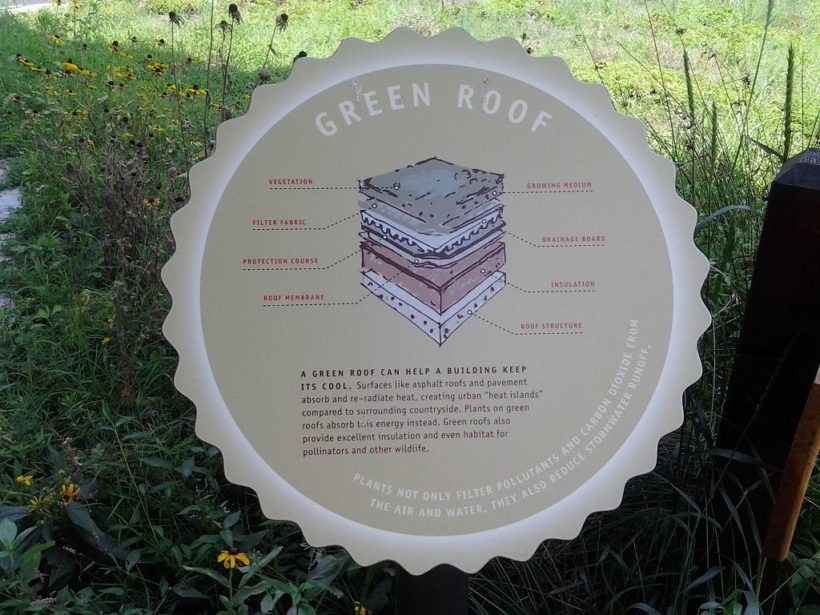 By MIRIAM ACZEL
By MIRIAM ACZEL
The power of collective environmental action should not be a surprise when it comes to promoting the transition to a cleaner, greener planet. There are many simple changes you can make to embrace a more sustainable lifestyle. But how can businesses, particularly those first starting out, embrace the same techniques to reduce their carbon footprint, and encourage others to do the same?
1. Let there be (natural) light!
To the extent possible, try to take advantage of natural lighting when designing or organizing your office layout. When setting up your workspace, think about strategically placing workstations in areas with maximum sunlight. Mirrors and reflective surfaces can also help magnify natural light. If you are able to design your own space, you can take advantage of light tubes and skylights such as Velux’s Sky Tubes and tubular skylights to channel natural sunlight into dark areas.
2. Energy-efficient lighting
Another way to maximize lighting and save money and energy is to install, or switch to, more efficient LED lights. LED lights are nearly 80% more efficient than traditional types of lighting such as incandescent or fluorescent and lights. In addition, over 95% of the energy in LEDs is converted into light while only 5% of the energy is lost as heat, thereby maximizing their efficiency. You can really supercharge your electricity savings by installing timers and other ‘smart technology’ to ensure the lights don’t remain on when not needed.
3. Waste Not
According to the EPA, roughly 80-90% of solid waste in the average workplace is, in fact, recyclable. Furthermore, every year the EPA releases an annual report called Advancing Sustainable Materials Management: Fact Sheet, which contains helpful information on municipal solid waste (MSW) generation, as well as suggestions for recycling, combustion with the potential for energy recovery and landfill information. Most importantly, as business development expert Brittany Klontz says, “sustainability starts with your employees,” so it’s essential to encourage sustainable behavior through facilitation of recycling as well as reducing waste generation by limiting disposable utensils, printing, and other items.

4. Become a Star Energy Saver
Heating and cooling are significant sources of energy use and switching to more efficient systems offers the opportunity to reduce costs and reduce your overall carbon footprint. For example, when installing air conditioning or heating systems, look for certified Energy Star appliances, which are more efficient than non-approved appliances. In addition to benefiting from financial and energy savings by using Energy Star-approved lightbulbs and electronics, certain facilities such as commercial buildings and industrial plants can also earn the Energy Star certification—yet another great way to set your business apart and demonstrate your dedication to sustainability and energy efficiency!
5. Certified Environmental LEEDer
 The Leadership in Energy and Environmental Design (LEED program) provides yet another great chance to show your business’s dedication to the high standards of environmentally-friendly ‘green’ buildings. Gaining LEED certification requires compliance with various building criteria, ranging from the location of the site to the quantify of recycled content used in construction materials. Managers can choose what criteria they aim to meet, and then earn points for greener choices—more points leads to a higher level of LEED certification, a surefire way to promote your business’s positive image.
The Leadership in Energy and Environmental Design (LEED program) provides yet another great chance to show your business’s dedication to the high standards of environmentally-friendly ‘green’ buildings. Gaining LEED certification requires compliance with various building criteria, ranging from the location of the site to the quantify of recycled content used in construction materials. Managers can choose what criteria they aim to meet, and then earn points for greener choices—more points leads to a higher level of LEED certification, a surefire way to promote your business’s positive image.
6. Better Businesses: Certified B Corporation
Another way to set your business apart is through B Corporation Certification. The B Corp certification requirements are the gold standard—the “only certification that measures a company’s entire social and environmental performance,” including a company’s impact on community, customers, the environment and employees. Businesses can meet these high standards and demonstrate positive impact from sustainable supply chain practices to development of charitable enterprises.
7. Smart Technologies for Smarter Savings
As mentioned in Leaders in Energy’s previous article on smart meters, these small electronic devices track and record energy consumption, and communicate energy usage information back to the electrical utility in real-time. This can therefore help reduce overall energy use by providing consumers and businesses with the ability to monitor energy use and empower them to make better and more efficient choices.
8. Wiser Water Use
According to WaterWise, taking a structured approach to water management can significantly reduce the amount of waste and water use by roughly 1/3. For example, making an effort to implement recycling techniques and implementing technologies such as more efficient toilet flushes and automatic taps can result in money and water savings. WaterWise also provides several useful resources that can be implemented in both residential and commercial settings.
9. Truly Green Landscaping
In addition to conservation of water and energy within offices and buildings, it’s important to consider the potential environmental footprint of commercial outdoor spaces as well. Green roofs and rooftop rainwater collection are a great way to both collect rainwater as well as ensure more efficient heating and cooling, and they can really make a beautiful green statement! In addition, consider using sustainable landscaping—plants that conserve water or require less water as an alternative to water-intensive grasses.
10. When You’re Off, Turn if Off
A key thing for businesses to keep in mind is that when something that consumes energy—such as your computer, coffeemaker, or printer—is not being used, turn it off when possible.Timers and automatic sensors can help reduce use and lower your utility bill, and promote a culture of more mindful technology use.
11. Track Your Progress and Energy Savings
Staples provides a user-friendly online energy consumption calculator, and WWF has developed a Carbon Footprint Calculator. Both of these tools are a great way to track your energy and other natural resource consumption and can help ensure that you and your company are on track to achieving your sustainable business goals.
12. ‘Gamify’ your green goals
Another way to guarantee that you and your coworkers and employees are always on the lookout for ways to reduce consumption is by setting targets or competitions for achieving lower environmental footprints. For example, games and apps such as the Picks for Positive Impact Points (PIPs Rewards) use a combination of games, smart tools, and points to incentivize and reward more sustainable choices such as biking or walking to work or opting for renewable energy solutions. ‘Gamification’ of your sustainability goals, such as the five games listed here, can provide a fun way to promote and reward making more sustainable daily choices both in the office and outside.
The case is clear: reducing consumption and opting for more sustainable quotidian choices at work and beyond is at once better for the environment, helps promote a positive business image, and is a great way to reduce costs.
To learn more, check out Barron’s list of 100 Most Sustainable Companies, and Leaders in Energy’s Clean Energy and Sustainability Resources. Leaders in Energy has compiled a list of resources for sustainable and socially responsible investing.
Have more suggestions or resources you’d like to share? Feel free to reach out or comment below.
Miriam Aczel is a President’s Scholar PhD Candidate at Imperial College London’s Centre for Environmental Policy. Her research focus is on international energy science and policy, with a focus on mitigation of environmental and health impacts of shale gas. She is also co-founder and co-director of the Amir D. Aczel Foundation for Research and Education in Science and Mathematics, a nonprofit based in Cambodia.



Leave a Reply